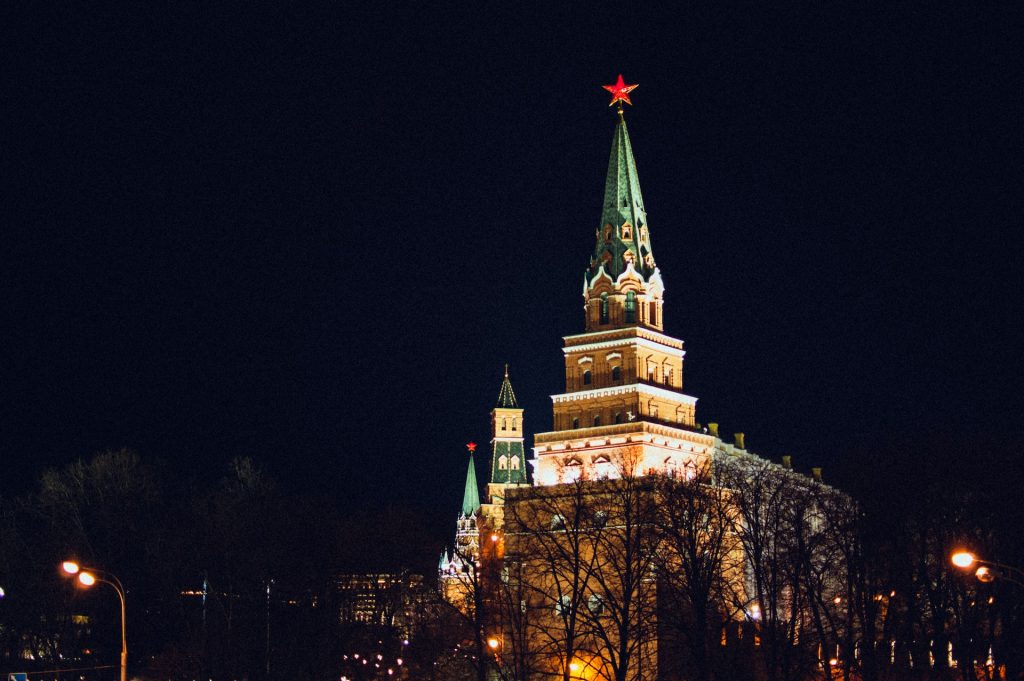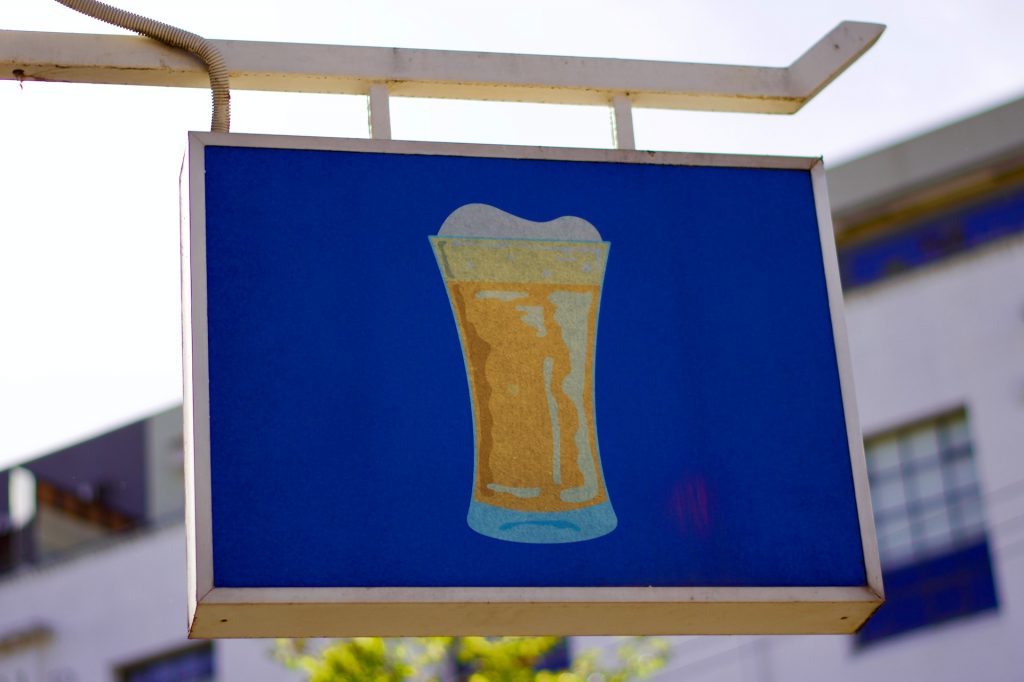Before the year is out, the Russia beer market will probably have seen the exodus of AB-InBev, Heineken and Carlsberg. This marks a geo-strategic U-turn on an unprecedented scale. Together with the former SABMiller and Turkish brewer Efes, they have built the Russian beer market. When the Soviet Union collapsed, Russians drank 20 litres beer per capita. Beer consumption peaked in 2007 at 80 litres. Now it is around 60 litres. By pulling out, the Western brewers are also quietly putting globalisation into reverse. Beer production in Ukraine is picking up again and Carlsberg has reopened its three breweries. But for as long as the war rages, Ukraine’s brewers are facing an uphill struggle to brew and distribute their beer.

Stay, leave, or hand over the keys: Foreign firms find themselves in a squeeze if they want to pull out of Russia. On 24 February, Russia invaded Ukraine. The West has since responded with a barrage of sanctions and appeals to boycotts, which aim to cripple the world’s 11th-biggest economy, stall the war effort, prod ordinary Russians to protest and deter other foes (namely China) from similar escapades. What are the results?
To date, the Yale School of Management has recorded more than 1,000 companies from around the world, which have disengaged to varying degrees from Russia, either as a result of sanctions or in protest of Russia’s invasion of Ukraine.
The Yale log lists brewers AB-InBev, Heineken and Carlsberg under the heading “withdrawal” because of their pledges made in spring, whereas Turkish brewer Anadolu Efes, AB-InBev’s joint venture partner in Russia and Ukraine, is shamed for “digging in”. Efes is not alone. According to Yale’s researchers, 240 foreign companies are “digging in”, conducting business as usual with no announced plan to dial things back.
If the moral case against President Vladimir Putin’s attack on his neighbour is undeniable, the business arguments for and against pulling out of Russia can be more complicated. Plenty of firms have balked at leaving Russia, as they face government restrictions, rock-bottom valuations for their assets and another round of moral outcries should they be forced to sell to a Russian buyer linked to Mr Putin’s circle.
In Ukraine, domestic beer production (until end of July 2022) declined by 32 percent over the same period last year to 7.1 million hl, according to industry body “Ukrpivo”. Beer production recovered during the second quarter, after a massive drop of 50 percent in the first quarter. The decline in output was exacerbated by the discontinuation of beer exports to Russia and Belarus. Third-ranked brewer Obolon alone must have lost hundreds of thousands of hl, insiders say.
In 2021, before Russia’s invasion, Ukraine produced 17 million hl beer. AB-InBev-Efes led the market with a share of more than 30 percent, closely followed by Danish brewer Carlsberg.
Despite the fighting, beer production must have continued to some degree, even though breweries had to stop distribution and mainly offer cash and carry. From what we hear, plenty of trucks have been requisitioned by the army.
The three breweries owned by the AB-InBev-Efes joint venture have been shuttered since the beginning of the invasion. Carlsberg has since reopened all of its three breweries (Kyiv, Zaporizhzhya and Lviv).

In Mexico, breweries face a crisis in the drought-stricken north. President Andrés Manuel López Obrador wants beer production in northern Mexico to stop. The city of Monterrey, a big industrial hub, and located some 240 km south of the Texan border, is already rationing water. But Mexico is also the world’s largest exporter of beer, shipping over USD 5 billion of beer in 2021.
Mexico’s brewers, AB-InBev, Heineken and Constellation, say they consume less than 1 percent of the local water, most of which is used by farmers who have no incentive to conserve it. However, Mexico’s populist president never wastes an opportunity to bash the big industrialists.

Some 200 new breweries opened in the UK last year. Although craft beer has entered its second decade, there are no signs that the segment has reached a peak. Research from accountancy firm UHY Hacker Young shows that hopefuls are still entering the brewing industry. About 200 new brewing licenses were issued in the year up to 31 March 2022, bringing the total number to 2,426.
Although this makes for impressive reading, the boom in brewery start-ups has actually begun to slow.
The reliability of the data has been questioned by the Society of Independent Brewers (SIBA), which represents about 700 small brewers: “The latest figures from UHY Hacker Young can give a misleading picture of the number of craft breweries operating in the UK as they include those who hold a brewing licence and not those who are actively brewing, which is around 1,800 breweries.” Moreover, SIBA said that about 160 small brewers had been lost during the coronavirus lockdowns and that at least another 40 had been forced to close this year.

Mikkeller will close its San Diego brewery. Is there a San Diego curse going round? After brewers Ballast Point, Saint Archer, Modern Times, Green Flash, Alpine and Stone faced major problems and sold themselves, Mikkeller announced in August that it will close its brewery, blaming two years of Covid and rising costs. About half of Mikkeller’s US employees – 25 – will be laid off. Mikkeller is seeking an immediate sale of its brewery and warehouse.
Its beers for the US market will be supplied through a contract brewing agreement with AleSmith, also from San Diego. Mikkeller and AleSmith go back a long way. After AleSmith had built a larger brewery, Mikkeller took over its original 20,000-barrel plant in 2016. Reportedly, Mikkeller produced some 10,500 barrels beer in 2021, down from a high of nearly 12,000 barrels in 2019.
There is no golden rule that says a successful beer brand will stay that way. Brands come and go, often with lightening speed. Styles evolve. Sometimes a beer brand is not resilient enough. It simply is not connecting enough with consumers. But it is not always another brewery or competition that hasten its decline. Often the demise is homemade as brand owners want to rationalise their portfolios, streamline production, and eliminate complexities. Depriving a brand of the necessary TLC, they see that more profit is to be made elsewhere. This then enters into their own forecasts that the brand has no bright future anyway. QED. As brewers big and small grapple with the problem that young consumers seem to care less for beer than previous generations, expect them to make decisions that will baffle older folks.
Leffe, Grimbergen and Affligem: Do abbey beers need a home? At the end of August, Heineken turned off the lights at the Affligem brewery in Opwijk, Belgium. Although the official reason for the closure is plausible enough – the plant is subpar Heineken’s sustainability standards – it still raises pertinent questions.
Above all, does Heineken think the brand can thrive without a physical home? The beer is named after the Affligem Abbey, situated a few km down the road. It is a Benedictine monastery, which was dedicated in 1086.
This question has been bugging me since January, when Heineken announced its imminent closure. It eventually became a puzzle because the nearby Grimbergen Abbey had just opened a swish new brewery cum restaurant (June 2021), the first on its site for some 200 years, with great fanfare.
Not enough, in June this year, the Grimbergen brewery was joined by a no-expenses-spared visitor centre, which provides “a multi-sensory experience journey through Grimbergen’s 900-year history,” according to Carlsberg’s press release. Grimbergen is a Premonstratensian monastery, which was established in 1128.
The two events – one closure, one opening – can shed light on how the two Big Brewers, Heineken and Carlsberg, view their respective abbey beer brands. Incidentally, there is no spin on either Affligem or Grimbergen in their 2021 annual reports, which may indicate they are just one of several hundred brands in their respective global portfolios.
However, it is debatable if abbey beer brands need a physical home. Unlike Trappist beers, which must be brewed at Trappist monasteries under the supervision of its monks to carry the Trappist seal, abbey beers are brewed by secular breweries in reference to an abbey. Usually there is a contract between the abbey and the brewery, which provides the abbey with royalties in exchange for the use of its brand.

It was not to be. Australian brewer Lion announced the sale of its UK-based operations, including the Magic Rock and Fourpure breweries, to the newly launched venture Odyssey Inns, effective 8 August 2022. The sale marks Lion’s retreat from the UK.
Whether Lion leaves with the tail between its legs – the pun was impossible to resist – is an open question. Financial details were not disclosed.
You have to give it to Australian brewers: they like to think big and act even bigger. Having acquired the craft brewer Little Creatures from Fremantle, Western Australia, in 2012, Lion wasted no time and took the brand international by setting up microbreweries as far away as Hong Kong, Shanghai, Beijing, Singapore, Taipei, Auckland, London, and San Francisco.
Even before Lion opened its flagship microbrewery in London in 2019, it snapped up the London craft brewer Fourpure (2018) and Yorkshire’s Magic Rock (2019). At the time, Magic Rock was considered a leading UK craft brewer, selling 16,000 hl beer in 2018. With such a portfolio of domestic and international brands, Lion expected to conquer a sizeable share of the UK’s craft beer market. In retrospect, this was overly ambitious as the UK already sported more than 2,000 craft breweries.
Seeing that the pandemic hit its UK business particularly hard, Lion began to count its losses. Odyssey Inns has now been named as the buyer of Magic Rock, Fourpure and the Little Creatures venue.

Lager fans blast Heineken Silver aimed at ‘lighter drinking’ Gen-Z Brits. It is a big worry. Gen-Zers, also known as post-millennials because they will come of age this decade, do not take to beer in such a big way as previous generations did. Beer marketers are confounded: How to attract them to the category? Heineken thinks it got the answer: Heineken Silver.
According to an article in The Sun newspaper, Heineken Silver “has been panned by fans who say it is ‘woke madness’ and are urging the company to rethink.”
Critics complained that the beer is dull and overpriced when compared with the real Heineken at 5 percent ABV. Although carrying a lower tax load than the full-strength version, it still costs the same. Others thought it marks a scary trend. “I fear this is the future of beer now, woke options aimed at Generation Z rather than traditional beer lovers who have been drinking it for years,” one punter moaned.

The UK pub chain Wetherspoon is charging its customers as much as GBP 6.29 (USD 7.70) per pint at some London pubs – more than twice that it charges outside the capital.
The average price of a pint of draught lager in the UK was GBP 4.09 (USD 4.95) in June, an increase of GBP 0.13 since January, according to the Office for National Statistics.
Tabloid newspapers were outraged by Wetherspoon’s flexible pricing. Yet, the eye-watering prices – which are themselves the result of soaring rents, wages, and transport costs – illustrate how the cost-of-living crisis is hitting drinkers in the pocket.
BrewDog is sounding the alarm bells. The co-founder of BrewDog said its beers are to become “a little more expensive” and warned that rising inflation has the potential to “destroy more businesses than the pandemic”.
James Watt said it cost BrewDog 25 percent more to make a case of its Punk IPA beer today than it did last year. If he were to pass the cost increase on to retailers, his beers could cost 38 percent more on the shelves.
This will not happen. Instead, he suggested brewers and retailers should lower their profit margins and absorb some of the cost increases.
The 15-dollar pint: biggest tax hike in 30 years for Aussie beer drinkers.
The Australian Tax Office raised the excise by 4 percent on 1 August, leaving Australians with the world’s fourth-highest beer tax behind Norway, Japan, and Finland. Australians now pay 30 percent more tax on beer than their fellow drinkers in the UK.
Australia’s excise on beer is automatically adjusted twice a year in sync with inflation, which is growing at its fastest pace in more than two decades. Inflation is not expected to peak until the end of the year. Wine operates under a separate taxation system.
Brewers and publicans fear that the price of a pint (570 ml) at the pub could surge up to AUD 15 (USD 10.50).
The brewing industry campaigned for lower taxes earlier this year, however without success.